Morocco - Overseas Adventure Travel tour
April 5-25, 2022
Part One - Pre-trip to northwest Morocco
Page Two - Visit with a farm family
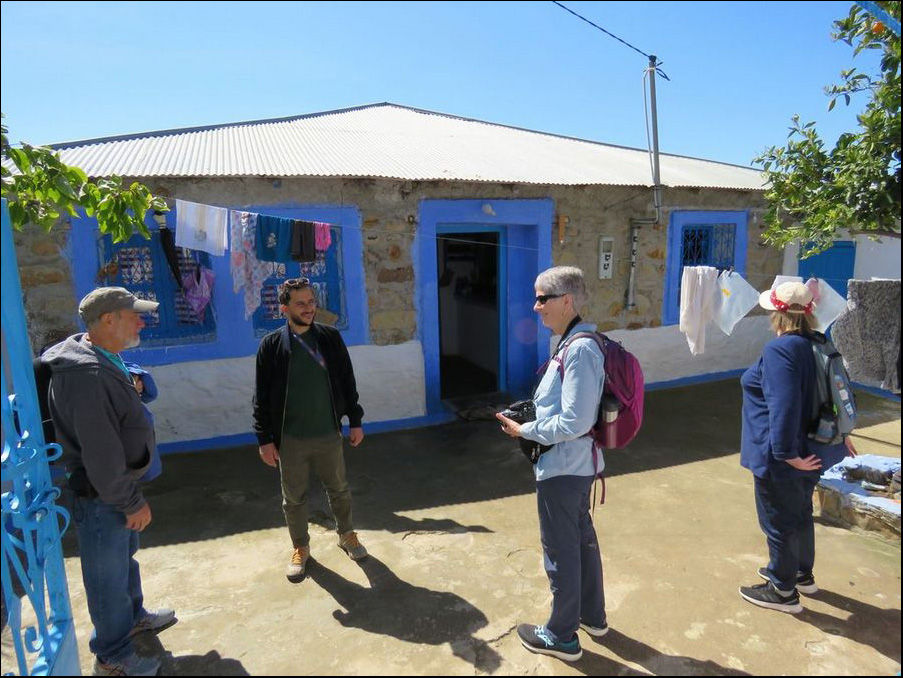
We drove from Chefchaouen to Houmar to meet a rural family.
Here are some of us with our guide Issmail in front of the home.

The wife and mother of the family in the kitchen
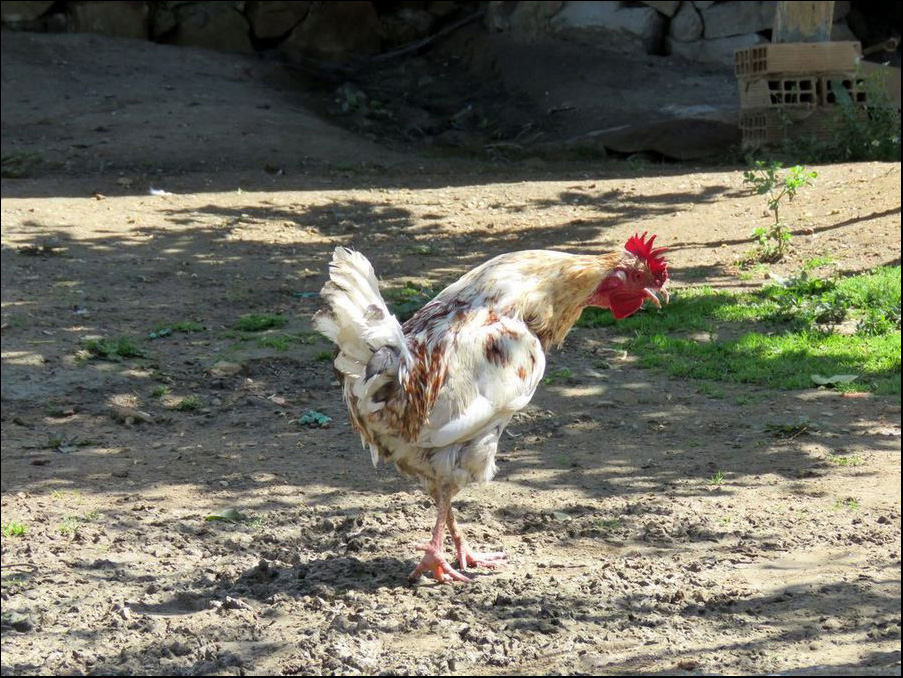
One of their farm animals announcing its presence
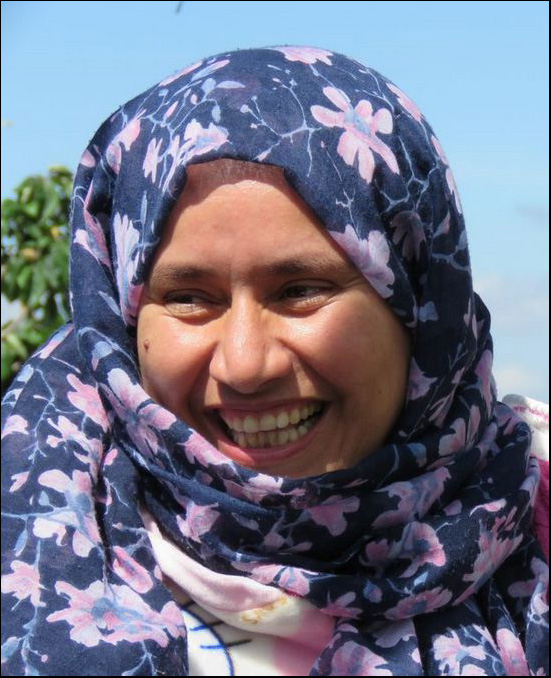
The mother. In Morocco, the headscarf is not enforced by law nor forbidden by law,
and women are free to choose if they wish to wear one. The hijab is
more frequent in the northern regions, small to medium cities, & rural regions.
It is not totally widespread; wearing a hijab is considered a religious decision.
We talked to one woman who told us she wanted to be a TV anchor but was
told that it wouldn't happen as long as she wore her hijab. As in all countries,
what's legal and what's culturally accepted can differ.

Having tea before lunch, served by the husband and father of the family.
The most popular drink is "atai," green tea with mint leaves and other ingredients.
Tea has a very important place in the culture of Morocco and is considered
an art form. It's served not only at mealtimes but throughout the day. It is
especially a drink of hospitality, commonly served whenever there are guests.
It is impolite to refuse it.

Before lunch, we went into some of their fields to pick some of their crops
to use for our lunch.
Since it was springtime, flowers were out.

Some of the crops in the foreground and a view from their farm.


One of their girls, who was very energetic and "high fived" Sara.

Making bread. A big part of the daily meal is bread. Bread in Morocco
is principally from durum wheat semolina known as khobz. Fresh bread
is a staple. It was always very good. The woman making the bread
was a neighbor of the family we visited.
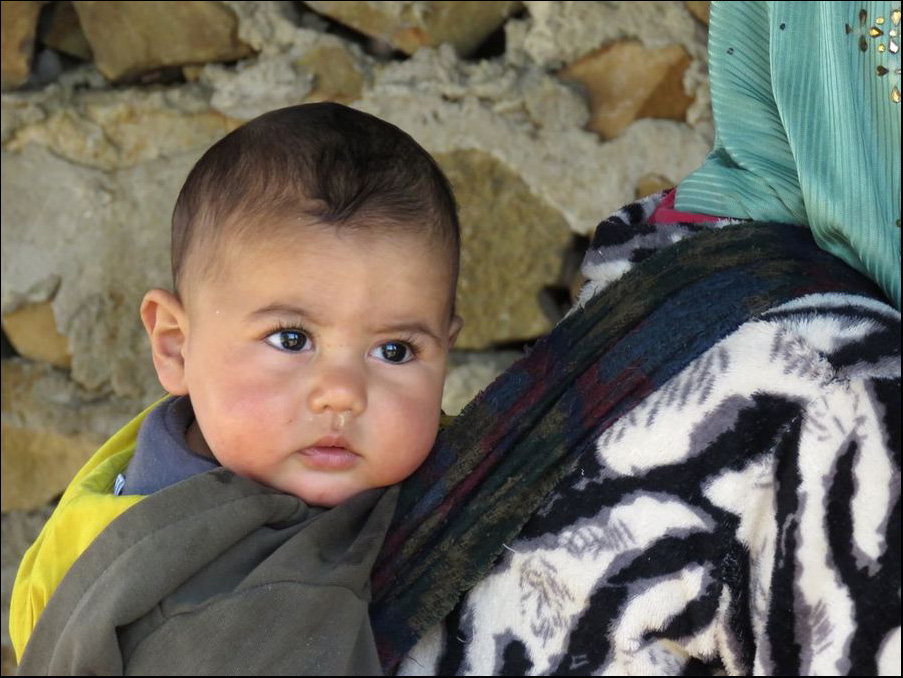
The neighbor's child
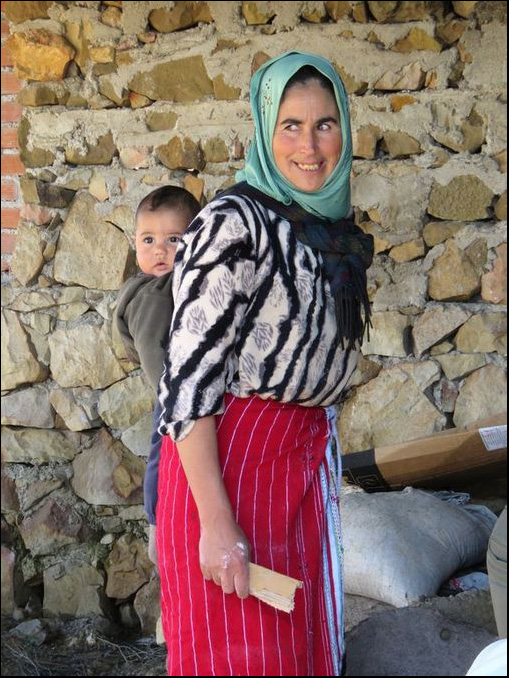
The woman and her baby. It's
common for neighbors to help with the breadmaking.
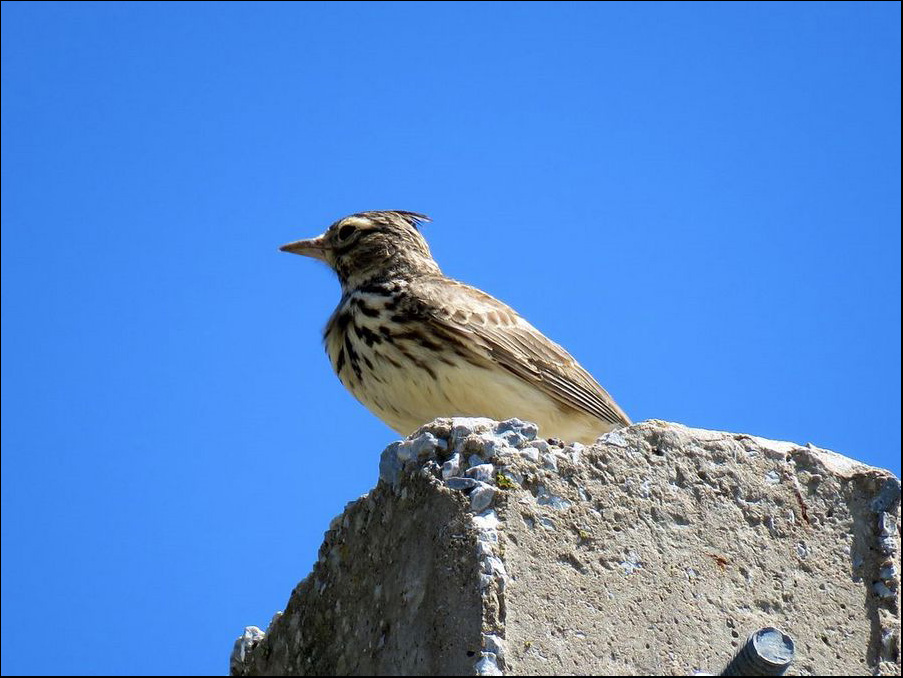
A bird near the farm. I think it is a Thekla's lark, a bird species
that breeds in the Iberian Peninsula and northern and sub-Sahharan Africa.
It is nonmigratory.
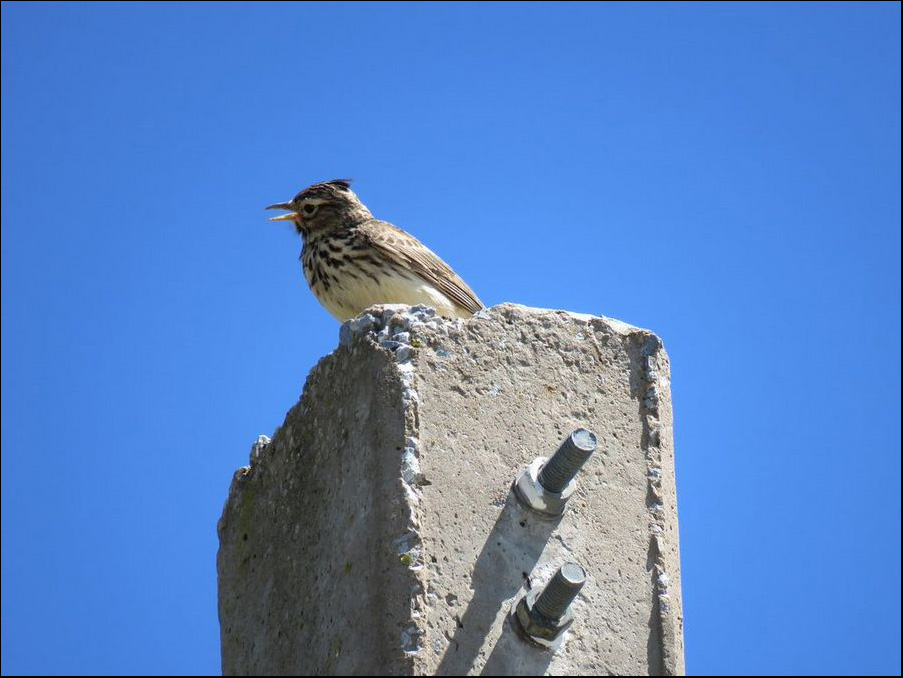

Bonnie walking with one of the daughters on the road into the farm.
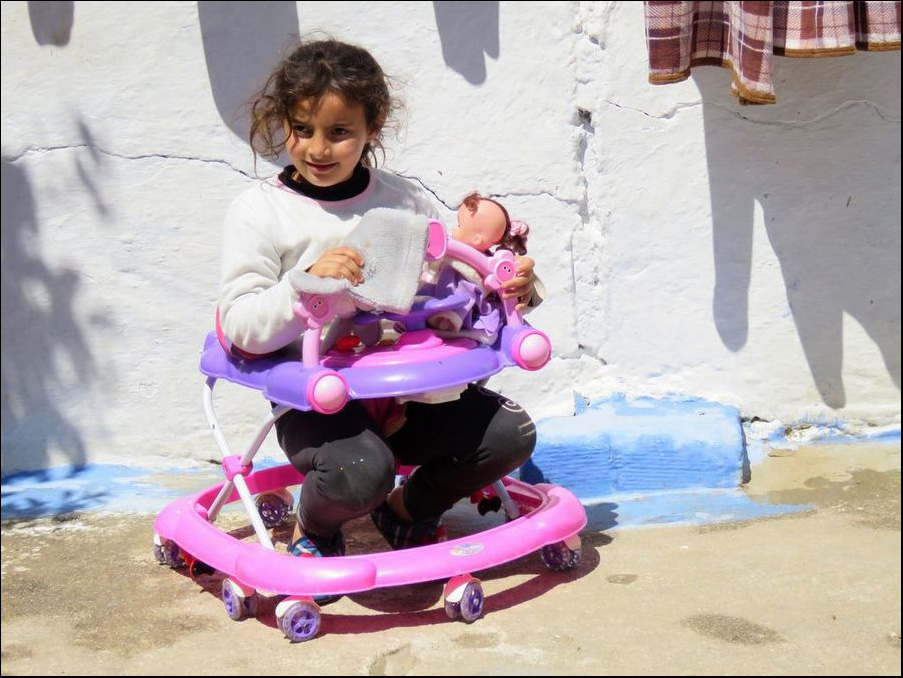
The older daughter
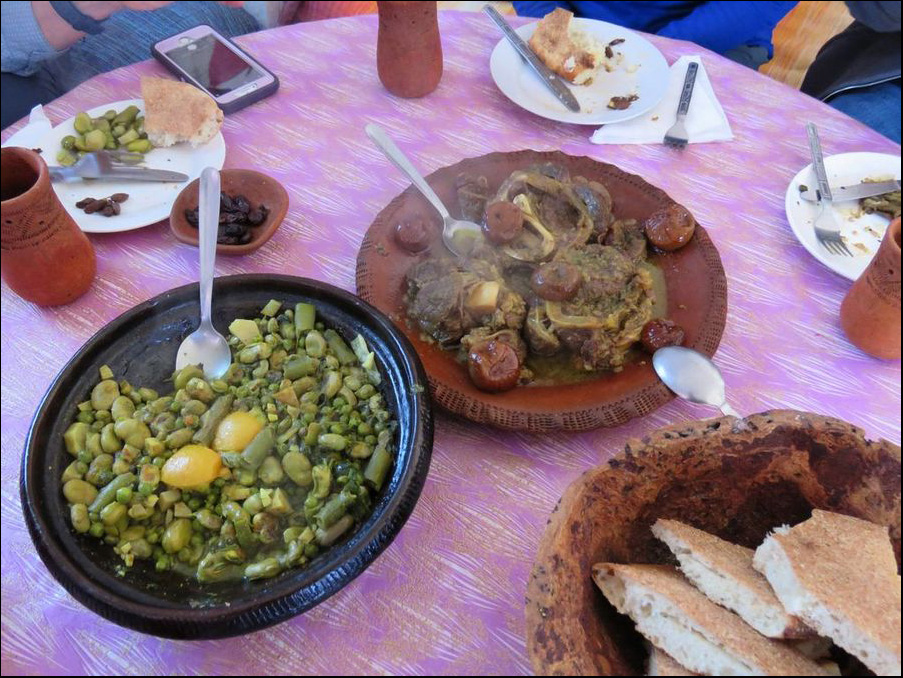
Some of our lunch. Moroccan cuisine is one of the most diversified cuisines
in the world.
This is a result of the centuries-long interaction of Morocco with the
outside world.
The cuisine is mainly a fusion of Moorish, European, and Mediterranean
cuisines. Spices are used extensively (not hot spices). While spices have been imported
for thousands of years, many ingredients, such as saffron, mint, olives, oranges,
and lemons are home grown. The food was delicious, and we were always
served more than we could eat throughout the trip.
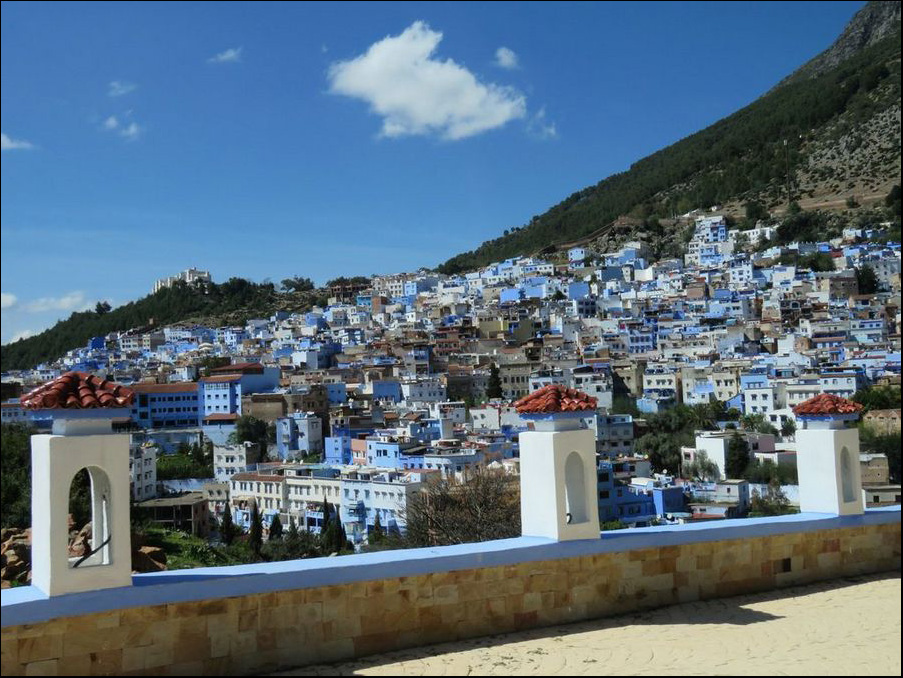
Arriving back in Chefchaouen after lunch

The "two horns" or mountains above Chefchaouen, resulting
in the city's name.
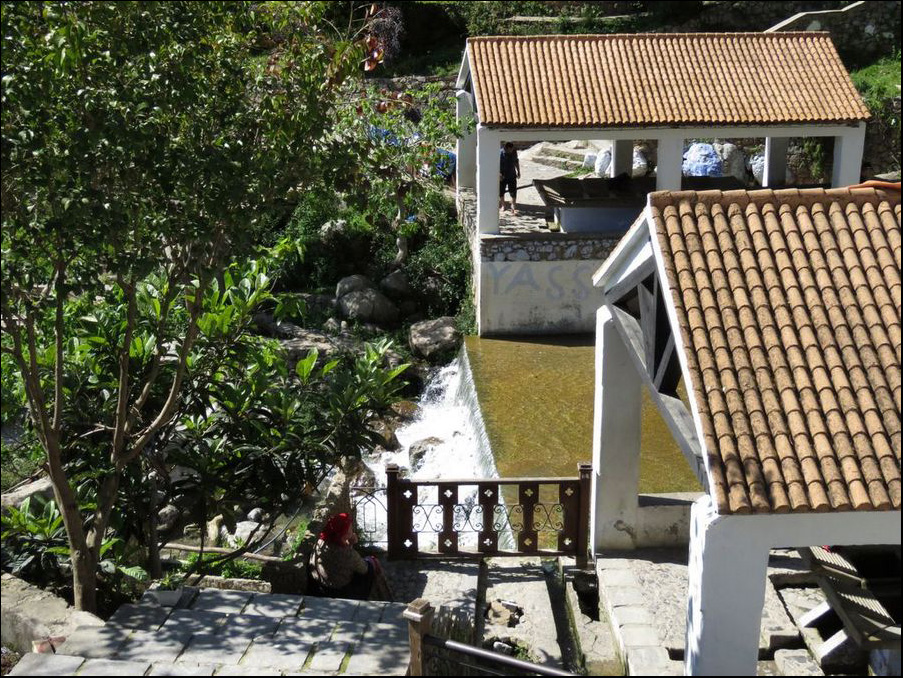
At Ras Elma in Chefchaouen where locals gather at this cascading
waterfall and river to wash clothes, enjoy picnics, or just sit.
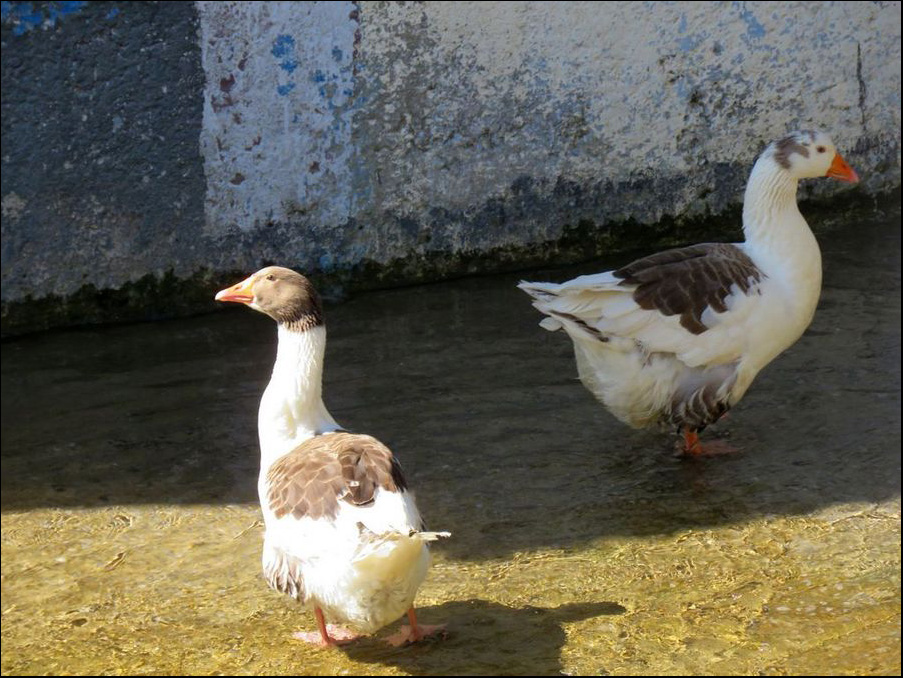
Seen near the falls

Peacock near the falls
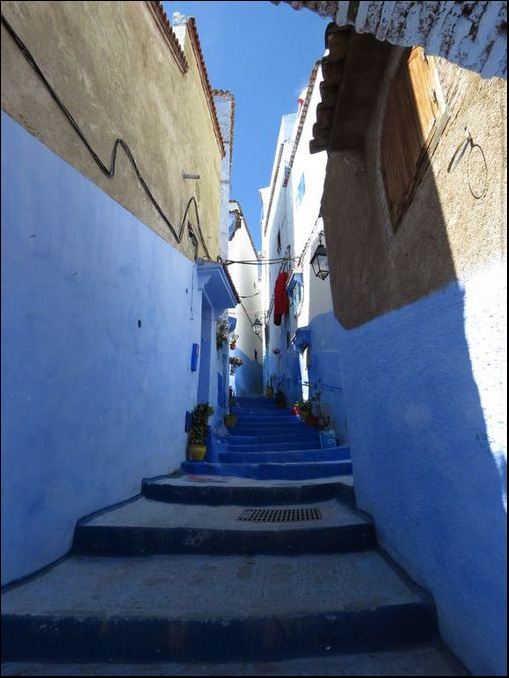
One of the many side streets we saw within the medina
while
walking back to Casa Hassan,
where we stayed.
Most medinas are only for pedestrians, with occasional motorbikes
and donkeys and carts pushing through the crowds.
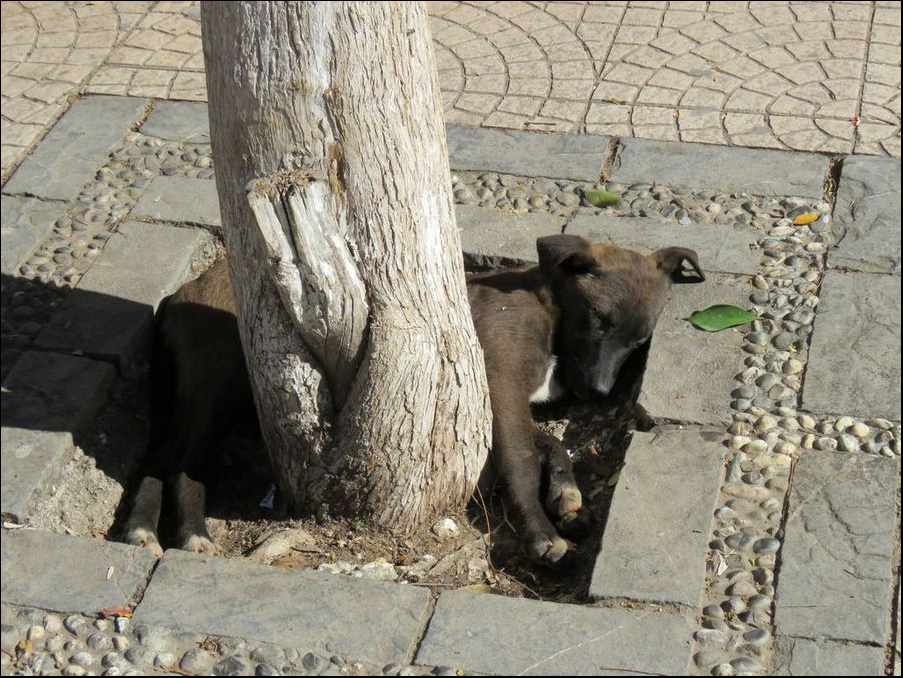
A stray dog, sleeping around a tree, that we saw the following morning
as we were walking to our coach to go to the historic medina of Tetouan.
There are
many stray dogs and
especially many stray cats in Morocco.
Link to Page Three - Tetouan
Pat's Home Page